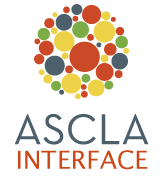By Barbara Reading, Library Development Director, Missouri State Library
When we started planning a program based on a study of the impact of LSTA services, we had little idea how timely the program would be. After all, LSTA has served as the long-standing ‘federal stimulus’ program for libraries. IMLS, the Institute of Museum and Library Services, commissioned a study by Ethel Himmel and Bill Wilson of the LSTA Grants to States program. They examined data provided in state program reports, five-year evaluations, state plans and interviews with state librarians, and presented the results to IMLS in December 2008 in a report titled “Library Services and Technology Act: Grants to State Program Trends Analysis”. IMLS combined their findings with additional information from state library agencies and library statistics and published in June 2009 the report “A Catalyst for Change: LSTA Grants to States Program Activities and the Transformation of Library Services to the Public.”
The SLAS program, titled, “What can $930 million do for library services nationwide? The impact and future directions of LSTA”, focused on presenting some of the trends identified by Himmel and Wilson. We also featured a panel to demonstrate some innovative uses of LSTA funds in communities and states.
Bill Wilson led off the program with an overview of the study, which was based on activity in all 50 states plus DC and Puerto Rico over a four-year period—FY 2003-FY 2006—covering $630,000 in LSTA allotments to states. The goals of the trends analysis were to:
1) report on program impact,
2) identify and analyze themes and
3) provide a summary profile of the nation and each state.
Wilson emphasized challenges for the project, given the scope of the project and the inconsistency of reporting on LSTA projects from states. He remarked on the great variety of how states implemented their LSTA programs, with some states reporting as few as 2 projects, and another state reporting 537 for the same year! Wilson explained how they re-coded the projects into eight categories, and then collapsed those to three major ‘strategies’ that describe how states use LSTA funds: information infrastructure, library service expansion and access, and human capital development. The largest number of projects and expenditures are in the information infrastructure area, while projects that support human capital development tend to be smaller, local projects. A trend of moving from “boxes and wires” to “content” was also observed in the information infrastructure area.
For the panel, we had two presentations of two projects from the human capital development area, and one information infrastructure.
Judith Anderson, Library Media Specialist, Matteson School District (IL), presented “Libraries: Leaders of Fitness of Mind and Body”. This project developed from her observation of a declining participation by students and the local community in fitness activities, and a desire to link together library service and an interest in fitness. Like fitness, interest in learning and library usage need to be fostered as lifelong habits. She stressed that the project activities, that made it fun for the children and parents to get active and get outdoors, helped to close a gap between a perception of the school library as solely for curriculum support and move toward support of lifelong interests.
“Bring in the Arts”, a program presented by Anne Hughes, Director of the Glen Carbon (IL) Centennial Library, showed how LSTA funding could be used to support arts education. She emphasized the partnership of the public library with the Edwardsville Children’s Museum and the Edwardsville Arts Center to help children learn more about the arts. The most exciting component of the grant was three mobile interactive display kiosks targeted for 5-9 year olds with interactive touch screen displays, hands-on items, and shelving for books related to the subject. The kiosks are available for loan to area libraries, schools, daycares, and pre-schools. The kiosks help children explore arts and crafts, music and dance, and storytelling and theatre. Hughes also shared how the innovative arts workshops help families in the community at all times of the day and evening.
Catherine Lemmer, Coordinator of Evergreen Indiana, Indiana State Library, presented information on the LSTA-funded “Evergreen Indiana” a statewide open-source integrated library system(ILS) initiative. “Evergreen Indiana” is a growing consortium of 54 public and school libraries—including the Indiana State Library—all of which use the Evergreen ILS. Several of the libraries are automating for the first time. Once libraries are in the system, patrons are able to view the catalogs of and directly borrow materials from other member libraries by using their “Evergreen Indiana” library card. Lemmer discussed how rapidly libraries were moving to join the shared resource system, the cost savings enjoyed by the libraries, as well as the challenges involved in building a consortium and moving from multiple ILS platforms to the Evergreen system.
